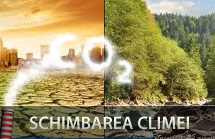http://my.news.yahoo.com/global-warming-turns-tundra-forest-study-173252619--finance.html
Plants and shrubs have colonised parts of the Arctic tundra in recent decades growing into small trees, a scientific study found, adding the change may lead to an increase in global warming pressures if replicated on a wider scale.
Scientists from Finland and Oxford University investigated an area of 100,000 square km, roughly the size of Iceland, in the northwestern Eurasian tundra, stretching from western Siberia to Finland.
Using data from satellite imaging, fieldwork and observations from local reindeer herders, they found that in 8-15 percent of the area willow and alder plants have grown to over 2 metres in the last 30-40 years.
A report of the research is published on Sunday in the journal Nature Climate Change.
"It's a big surprise that these plants are reacting in this way," said Marc Macias-Fauria of Oxford University and lead author of the report.
Scientists had thought that the colonisation of the warming Arctic would take centuries, he said.
"But what we've found is that the shrubs that are already there are transforming into trees in just a few decades."
Previous studies suggested that the advance of forest into Arctic tundra could increase Arctic warming by an extra 1-2 degrees Celsius (1.8-3.6 Fahrenheit) by the late 21st Century.
Warming in the Arctic is happening about twice as fast as in the rest of the world. As reflective snow and ice recede, they expose soil or water which are a darker colour and so soak up more of the sun's heat.
The same occurs when trees are tall enough to rise above the snowfall, presenting a dark, light-absorbing surface.
More warming in the Arctic is likely to spur oil and gas development, as well as attracting herds of reindeer as they feed on willow shrubs.
But a warming planet is also linked to increases in severe drought and flooding around the world, putting people, crops and livestock at greater risk.
The global average temperature last year was the ninth-warmest in the modern meteorological record, continuing a trend linked to greenhouse gases that saw nine of the 10 hottest years occurring since the year 2000, NASA scientists said in January.
Macias-Fauria said the area researched in the study is a small part of the vast Arctic tundra, and an area that is already warmer than the rest of the Arctic, likely due to the influence of warm air from the Gulf Stream.
"However, this area does seem to be a bellwether for the rest of the region, it can show us what is likely to happen to the rest of the Arctic in the near future if these warming trends continue."





